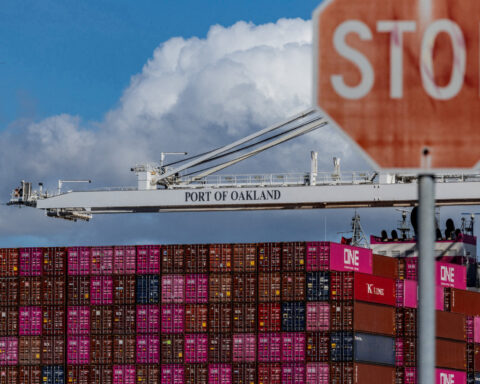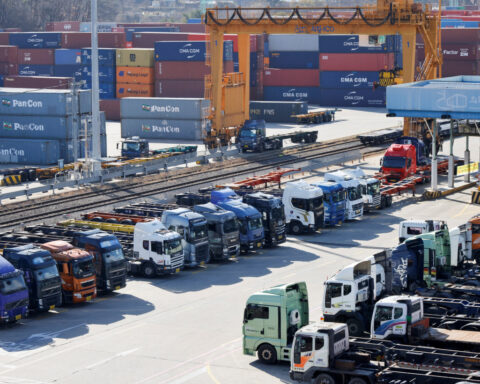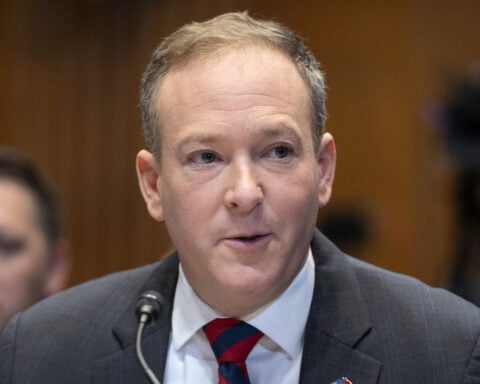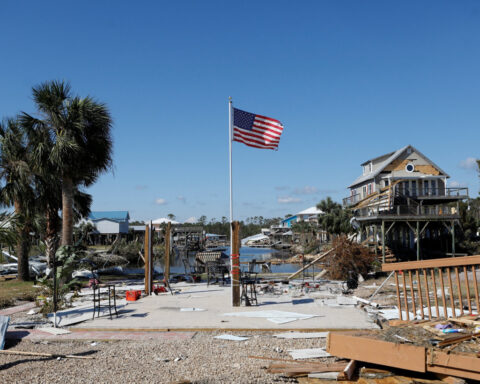By Timothy Gardner
WASHINGTON (Reuters) - The United States finalized a rule on Wednesday to boost the resilience of federal buildings and projects against flooding, a move intended to help save taxpayers money as climate change exacerbates damage from high waters.
WHAT IS THE STANDARD?
The federal flood risk management standard, first proposed by the administration of former President Barack Obama and finalized by the Federal Emergency Management Agency, requires U.S. agencies to protect federal buildings and projects from floods.
Under the rule, projects will be required to be built higher and avoid floodplains according to current and future flood risks. The rule allows FEMA to consider climate science to help make projects and communities more resilient to floods, which kill about 100 people a year in the U.S. and cause billions of dollars in damages. The standard applies to FEMA-funded actions involving new construction, substantial improvement, or repairs.
Hurricane Ian in 2022, for example, damaged public facilities across Florida, including bridges, schools and libraries. After September 9, such projects must be rebuilt at the higher standard to ensure they don't experience repetitive damage.
BY THE NUMBERS
A recent FEMA report said that when adopting the latest flood resistant building codes, every dollar invested saves $11 in damages and cleanup costs. FEMA said it will share costs to implement the standard at applicable projects, often 75% or more. For example, FEMA has found that raising a building two feet (0.6 m) to higher ground adds less than 2% of the total project cost. For a $1 million project, the estimated increase to the applicant after cost share, is less than $5,000, FEMA said.
KEY QUOTES
U.S. Secretary of Homeland Security Alejandro Mayorkas told reporters in a call: "It will help decrease flood-related damage and it will help keep Americans and the infrastructure upon which they rely - from fire stations and hospitals to roads and bridges - safe when extreme rain strikes."
(Reporting by Timothy Gardner; Editing by Michael Perry)

 Trump has begun another trade war. Here's a timeline of how we got here
Trump has begun another trade war. Here's a timeline of how we got here
 Canada's leader laments lost friendship with US in town that sheltered stranded Americans after 9/11
Canada's leader laments lost friendship with US in town that sheltered stranded Americans after 9/11
 Chinese EV giant BYD's fourth-quarter profit leaps 73%
Chinese EV giant BYD's fourth-quarter profit leaps 73%
 You're an American in another land? Prepare to talk about the why and how of Trump 2.0
You're an American in another land? Prepare to talk about the why and how of Trump 2.0
 Chalk talk: Star power, top teams and No. 5 seeds headline the women's March Madness Sweet 16
Chalk talk: Star power, top teams and No. 5 seeds headline the women's March Madness Sweet 16
 Purdue returns to Sweet 16 with 76-62 win over McNeese in March Madness
Purdue returns to Sweet 16 with 76-62 win over McNeese in March Madness







